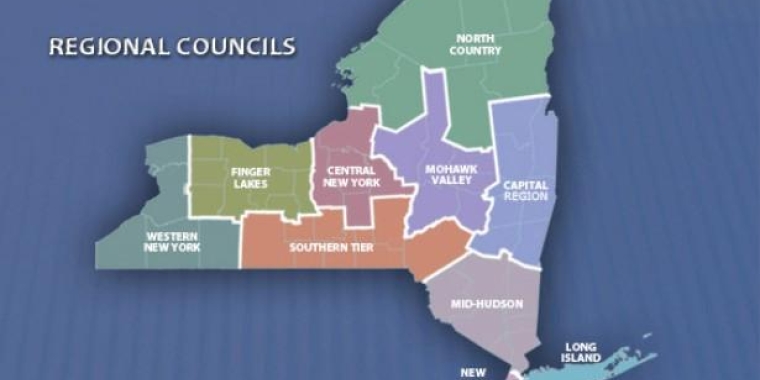
Gallivan seeks to provide unprecedented mandate relief for local governments
Patrick M. Gallivan
September 20, 2011
-
ISSUE:
- Property Tax
- Medicaid
- Medicare
Senator Patrick M. Gallivan (R-Erie), Senator Roy McDonald (R-Saratoga) and Assemblywoman Amy Paulin (D-Westchester) conducted a press conference Monday in Albany to outline a plan to structurally reform the cost administration of New York State’s Medicaid system by incrementally transferring full responsibility for funding the $44 billion program to the State -- gradually eliminating the local share traditionally paid by county governments.
“Medicaid is the largest unfunded mandate imposed on local governments by the State. This has resulted in New Yorkers paying the highest local taxes in the nation,” said Senator McDonald. “It is essential that we address the unsustainable local costs of Medicaid and implement responsible and realistic reforms to relieve the local mandate and tax burden.”
New York State’s Medicaid program – the most expensive in the country – consumes nearly 40 percent of its annual budget. Under its current structure, the program is funded by state and local governments, with matching funds provided by the federal government. Medicaid represents the largest mandated item in nearly every county budget. On average, Medicaid accounts for 45 percent of an individual counties’ local property tax levy. In many counties that percentage is significantly higher -- Fifty-eight percent of Rensselaer County’s property tax revenues are consumed by Medicaid costs, while Erie County must spend an astounding 94 percent of its property tax levy to meet its Medicaid obligations.
The proposal freezes local Medicaid costs, providing $180 million in immediate local savings by eliminating the automatic three percent annual spending increase currently required by statute. Starting in the third quarter of 2012, the local share would be reduced by five percent, providing counties with an additional $75 million in savings, for a total of $255 million in the county government fiscal year. Between 2012 and 2019, local Medicaid costs will continue to be gradually reduced as the state assumes an increasing share of the burden. The end result would completely eliminate Medicaid costs from local budgets, and provide municipal governments with the flexibility to substantially reduce local property taxes across the state.
“Freezing local costs for next fiscal year by eliminating the automatic three percent increase in Medicaid will provide immediate relief to local governments struggling to make ends meet under the constraints of the new property tax cap,” said Senator Gallivan. “But long term, structural mandate reform is absolutely necessary to ensure county governments don’t pass their ever increasing Medicaid burden on to local taxpayers.”
Medicaid costs for local governments are expected to increase $2.6 billion by 2025 if nothing is done to provide county governments with some form of Medicaid mandate relief.
“Without comprehensive changes to the costs structure of Medicaid, county governments are going to be faced with extremely regrettable choices. The tax cap will only work as intended to address the property tax burden in New York State if we provide the corresponding mandate relief on local budgets,” Said Assemblywoman Amy Paulin. “This proposal will permit local governments to control taxes, while ensuring they are able to continue providing the essential services working families rely on.”
The new legislation takes advantage of the Medicaid spending cap provision enacted in this year’s State Budget prohibiting the State from increasing spending on Medicaid by more than the ten year rolling average of the medical component of the consumer price index. Absent future legislation stripping the spending cap of its teeth, Medicaid will cost taxpayers $10 billion less than if the program continued to be funded jointly with local governments.
“The constraints of a hard spending cap will force additional reforms to Medicaid’s structure, and would be a perfect opportunity to implement and expand upon additional recommendations put forth by the Medicaid Redesign Team assembled by the Governor Cuomo in January,” said Gallivan.
Joining the state legislators in Albany to support the proposal were Bill Ryan, President of the New York State Association of Counties (NYSAC), and a bipartisan group of local officials across New York State.
“Right now county taxpayers pay more than $7.3 billion to the State for Medicaid, and that cost automatically grows by 3 percent each year. In some counties, Medicaid takes up the entire property tax levy. The growth in Medicaid alone for these counties exceeds the property tax cap,” said NYSAC President William J. Ryan, a Westchester County legislator. “The only way to achieve property tax relief is to reduce State mandates, and the program to reform first is Medicaid.”
“The challenges facing county government have never been greater. With the loss of federal stimulus funds, combined with the urgency of enacting a property tax cap, State action on Mandate relief is critical for our communities,” said Monroe County Executive Maggie Brooks, president of the New York State County Executive Association.
The legislators were also insistent that this final legislation will in no way preclude the legislature or Governor Cuomo from continuing to identify and eliminate burdensome unfunded or underfunded mandates aside from Medicaid.
An initial spending freeze, coupled with a multi-year transition of the local share of Medicaid costs are intended to intentionally allow the Governor, the Legislature and the State Department of Health a reasonable period of time to prepare and adjust the program to ensure that New York State’s Medicaid program is compliant with the new healthcare provisions and state mandates contained in the federal Affordable Care Act, enacted in 2010.
Share this Article or Press Release
Newsroom
Go to NewsroomSenator Gallivan Applauds REDC Funding
December 19, 2018

New Law Allows Wyoming County to Participate in Foreign Trade Zone
December 10, 2018

Legislation to Protect Students from Sexual Abuse is Signed into Law
December 10, 2018

